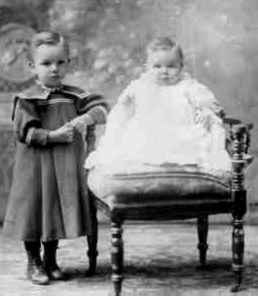
Figure 1.--Mostly it was younger boys who wore frocked styled dresses without a belted or defines waist.

Figure 1.--Mostly it was younger boys who wore frocked styled dresses without a belted or defines waist. |
Boys, especially by the mid-19th Century, did not generally wear free-hanging frock-like dresses. These dresses look rather like smocks. They are loose fitting, often with no front adornment or styling. They are back buttoning and lack the front buttons and belts that frequently adorn the dresses worn by boys.
Frock-styled dresses were simply constructed dresses that were loosly styled like smocks. Frocks usually had no defined waisline. Dresses worn by boys, especially after the mid-19th Century often had elaborate button arrangments in the front or even more commonly a belt worked into the design. Frocks on the oother hand had none of this and felt straight down from where the arms joined the bodice of the dress
Frocks were made in many different materials. Some were for summer wear and made out of light-weight fabrics for summer wear. Other frocks were made for winter wear out of heavier, often dark colored materials.
Some boys might wear frock-like smocks over their clothes, but before breeching they generally did not wear frocks. There were no precise rules on this. As the decision on the boys clothes was generally up to the mother, her fashion tastes generally ruled. However, the general patern was for young boys to wear belted dresses.
There were some exceptions to this general rule of boys wearing dresses with belys are defined waists.
Very young boys were the most likely to be atired in unbelted frocks.
Boys with older sisters would be the most likely to wear frocks as they would have me downs. Clothes were much more expensive in real terms than is the case today. Also many Victorian mothers believed in thrift--even in wealthy families.
Some mothers who simply preferred the unbelted frock look might dress even older boys in frocks. In the 19th Century there was no mass-media beaming the latest fashion trends into evet livingroom. Also public educaruin was not nearly established as it is now. More children were eduvated at home. In addition, parents had more authority. Cildren wore what their mothers purchased for them. Usually they were not even ] consulted abour what they wanted to wear. As a result, the mother's fashion sence was what determined what boys wore.
I am not sure what age boys might wear frocks. Most commonly it would ne younger boys up to about 4 years of age. As noted above, however, some older boys might wear frocks, especially boys whose mothers liked the style or who had older sisters.
I have no information yet on differing usuage of frocks in various countries.
This is a new topic and I am just beginning to acquire some information on it. Please let me know if you have any information or insights.
Navigate the Boys' Historical Clothing Web Site:
[Return to the Main dress page]
[Introduction]
[Chronology]
[Clothing styles]
[Biographies]
[Bibliographies]
[Activities]
[Countries]
[Contributions]
[Boys' Clothing Home]